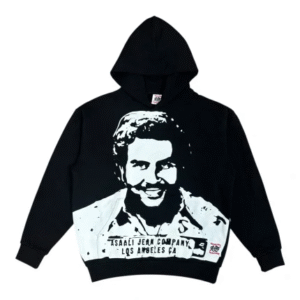Introduction to Social Media Influencer Marketing
Social media influencer marketing has transformed into one of the most effective strategies for businesses looking to build brand awareness, connect with audiences, and drive sales. With the growing popularity of platforms such as Instagram, TikTok, YouTube, LinkedIn, and Facebook, influencers play a significant role in shaping consumer decisions. Unlike traditional advertising, influencer marketing creates an authentic connection between the brand and the audience by leveraging the credibility and personality of influencers. In this blog, we will explore everything about social media influencer marketing, its benefits, strategies, types, trends, and how brands can succeed with it in today’s competitive digital landscape.
What is Social Media Influencer Marketing
Social media influencer marketing is a type of marketing strategy where businesses collaborate with individuals who have built credibility, authority, and a loyal following on social platforms. These influencers can be celebrities, industry experts, content creators, or micro-influencers who are trusted by their audiences. By endorsing products or services, influencers help brands connect with potential customers in a more organic and engaging way compared to traditional advertising. This approach works because people trust recommendations from individuals they admire more than promotional messages from companies.
Why Social Media Influencer Marketing is Important
The importance of social media influencer marketing lies in its ability to humanize a brand and foster trust. Modern consumers are becoming increasingly skeptical of advertisements, but they tend to value real experiences shared by influencers. Influencer marketing helps businesses reach niche audiences, increase credibility, and improve ROI. For instance, instead of investing heavily in generic ads, companies can partner with influencers who already have a strong connection with the target market. This not only saves money but also delivers higher engagement and conversion rates. Moreover, influencer marketing is highly scalable, whether targeting global markets with celebrities or focusing on local audiences with micro-influencers.
Types of Influencers in Social Media Marketing
When implementing a social media influencer marketing strategy, it is essential to understand the different types of influencers:
Mega Influencers
These are celebrities and public figures with millions of followers. They provide massive exposure but usually come with high costs and lower engagement rates compared to smaller influencers.
Macro Influencers
These influencers typically have between 100,000 to 1 million followers. They strike a balance between reach and relatability, making them effective for large campaigns.
Micro Influencers
Micro-influencers usually have between 10,000 and 100,000 followers. They often deliver higher engagement rates and have stronger connections with their audiences. Brands collaborate with them for niche markets and authentic interactions.
Nano Influencers
These are everyday social media users with fewer than 10,000 followers, but they often have close-knit communities and strong trust with their audience. Nano influencers are cost-effective and perfect for localized or small-scale campaigns.
Benefits of Social Media Influencer Marketing
Builds Brand Awareness
Influencer marketing helps increase visibility quickly by tapping into the follower base of influencers.
Increases Trust and Credibility
Since influencers are trusted figures, their recommendations often feel more genuine compared to traditional ads.
Improves Engagement
Influencer campaigns tend to get more likes, shares, and comments, which creates meaningful engagement with the audience.
Boosts Conversions and Sales
Well-executed influencer marketing campaigns can drive traffic and generate higher conversions.
Cost-Effective Compared to Traditional Advertising
Collaborating with micro and nano influencers can deliver great results at a fraction of the cost of mainstream advertising.
Social Media Platforms for Influencer Marketing
Known for visual storytelling, Instagram is one of the top platforms for influencer marketing, especially for fashion, beauty, lifestyle, travel, and fitness brands.
TikTok
With its short-form video format, TikTok has become a powerful influencer marketing platform, particularly for Gen Z audiences.
YouTube
Long-form video reviews, tutorials, and vlogs make YouTube an effective platform for influencer marketing.
Despite competition, Facebook still holds relevance for influencer marketing due to its massive global audience and diverse demographics.
Ideal for B2B influencer marketing, LinkedIn influencers can help businesses build authority and credibility in professional industries.
Twitter (X)
Although not as strong as visual platforms, Twitter influencers help in trend amplification and real-time engagement.
How to Create a Social Media Influencer Marketing Strategy
Define Campaign Goals
Brands must clearly outline their objectives, whether it’s increasing awareness, boosting sales, or driving engagement.
Identify the Target Audience
Understanding the audience’s demographics, interests, and behaviors is essential to selecting the right influencer.
Choose the Right Influencers
Selecting influencers based on relevance, reach, engagement, and authenticity ensures better results.
Develop a Collaboration Plan
Brands must decide whether the collaboration will be through product reviews, giveaways, sponsored posts, unboxing videos, or tutorials.
Set a Budget and Negotiate Terms
Costs vary depending on the influencer’s reach and type of collaboration. Brands must negotiate pricing and campaign deliverables.
Track and Measure Results
Analyzing performance metrics such as engagement rate, clicks, conversions, and ROI helps improve future campaigns.
Common Mistakes to Avoid in Influencer Marketing
Choosing Influencers Based Only on Followers
High follower count doesn’t always mean success. Engagement rate and relevance are more important.
Lack of Authenticity
Overly scripted campaigns can harm credibility. Audiences prefer authentic, natural content.
Ignoring Micro and Nano Influencers
Many brands overlook smaller influencers who often provide higher engagement and better results.
Not Setting Clear Objectives
Without defined goals, campaigns may fail to deliver measurable outcomes.
Poor Communication
Brands must maintain transparency and provide creative freedom to influencers.
Current Trends in Social Media Influencer Marketing
Rise of Nano and Micro Influencers
More brands are collaborating with smaller influencers due to their higher trust and engagement.
Video Content Dominance
Short-form videos and live streams are becoming the most effective formats for influencer campaigns.
Authentic Storytelling
Audiences value honest and relatable stories over promotional posts.
Long-Term Partnerships
Instead of one-off deals, brands are focusing on long-term collaborations to build consistency.
AI and Data-Driven Influencer Selection
Artificial intelligence tools are helping brands identify the most suitable influencers through advanced analytics.
Growth of B2B Influencer Marketing
LinkedIn and niche industry influencers are becoming important for B2B campaigns.
Measuring the Success of Influencer Marketing
Brands must evaluate campaigns using key metrics such as:
-
Engagement rate (likes, comments, shares)
-
Reach and impressions
-
Website traffic driven from influencer posts
-
Conversions and sales generated
-
ROI compared to the budget spent
Future of Social Media Influencer Marketing
The future of influencer marketing is expected to be more data-driven, transparent, and authentic. Virtual influencers powered by AI are also gaining popularity, and brands are experimenting with mixed-reality campaigns. Additionally, regulations are likely to tighten to ensure transparency in sponsored content. Brands that adapt to these changes and prioritize genuine connections with audiences will continue to thrive in this space.
Conclusion
Social media influencer marketing is no longer just a trend but an essential part of digital marketing strategies. It enables brands to connect with consumers in authentic, engaging, and impactful ways. By choosing the right influencers, creating well-planned strategies, and focusing on long-term partnerships, businesses can maximize their reach, build trust, and achieve sustainable growth. With the continued evolution of social platforms, influencer marketing will remain one of the most powerful tools for modern brands aiming to thrive in a competitive marketplace.







